Super Bowl XIII - Dallas Cowboys vs Pittsburgh Steelers: Pregame
The NFL made more changes for the 1978 season than in any year of its history except for 1970 when the merger with the AFL was completed.
- The regular season was extended from 14 to 16 games. The algorithm for determining which divisions played other divisions year by year was put in place and continues to this day (2019).
- Among the 12 rules changes were two that greatly benefitted offenses.
- Offensive linemen were allowed to extend their arms to pass block. Furthermore, O-linemen could also grasp the jerseys of defensive linemen provided their grasp stayed within the framework on the defender's shoulders. The predictable results were fewer holding penalties and more time for QBs to release the ball, which meant fewer sacks.
- The other change involved defensive backs, who could hit or obstruct receivers for only 5y past the line of scrimmage.
- A third change allowed a pass completion when the ball was deflected from one offensive player to another. Previously, a defensive player had to touch the ball in between.
- One change did help the defenses to a small degree. The league outlawed tear-away jerseys because they did not adequately support a player's shoulder pads.
- Expecting an increase in passing, the NFL added a seventh official, the side judge, who would be stationed along the sideline in the defensive secondary directly across the field from the back judge.
- The improvement in offensive efficiency can be illustrated by comparing the league statistics from 1978 with those of '77. Passing yardage per game per team increased almost 12%.
| Year |
Pts Per Game
Per Team |
Yds Per Game
Per Team |
Passing Yds. Per Game Per Team |
| 1977 |
17.2 |
285.8 |
141.9 |
| 1978 |
18.3 |
300.7 |
158.8 |
| Increase |
6.4% |
5.2% |
11.9% |
The Dallas Cowboys began the season determined to defend their Super Bowl XII title and earn the distinction of being the Team of the Decade by virtue of their three Super Bowl championships.
Yet the Cowboys were considered to be just another underachieving defending champion after 10 weeks of the season.
- Back-to-back losses to the Vikings and Dolphins had reduced their record to 6-4.
"I just don't think they were playing with emotion," said Miami DT Bob Baumhower.
- Fortunately, just one NFC team, the Los Angeles Rams, had eight wins
and only two others had seven, including the Redskins, who held a one-game lead over Dallas in the NFC East.
- But just when many pundits were writing off the Cowboys, they won their last six games to win the division by three games and tie the Rams for best NFC record at 12-4. Since Los Angeles had beaten Dallas in Week 3, the Cowboys entered the playoffs as the #2 seed in the NFC.
The Cowboys gave newcomer Jackie Smith much of the credit for their late season resurgence. Smith had retired following the '77 season, his 15th with the Cardinals. When Dallas's backup TE Jay Saldi was lost for the year with a broken arm, player personnel director Gil Brandt called Smith, who thought Brandt's offer was a practical joke. Only when Tom Landry spoke to him did Jackie realize the offer was real.
With the team in a downward spiral at 6-4, Smith addressed his teammates in the locker room and told them that he was impressed with the way they went about their business during his three weeks with the team. However, as S Charlie Waters recalled, "You guys are blowing it. You don't know what an opportunity you have here. You are not practicing aggressive. You are not hungry. You are not playing as a team." For Waters, "Jackie's speech was the reason we turned things around."
The post-season started with a surprisingly tough game against the Atlanta Falcons, who were making their first playoff appearance in the franchise's 13-year history.
- After trailing at halftime 20-13, the Cowboys shut out the Falcons the second half to win 27-20.
- That sent Dallas back to Los Angeles for the NFC Title Game, the club's seventh in the past eight years. Stung from giving up 27 points in the first meeting - the most all season - when Staubach threw four INTs, the defense dominated from the start in the 28-0 romp.
- Tom Landry's men would indeed have the opportunity to defend their Super Bowl title.
In the AFC, Pittsburgh prevailed to set up the first rematch in Super Bowl, a repeat of Super Bowl IX, and in the same venue no less - Miami's Orange Bowl.
- Chuck Noll's gang led the league in fewest points allowed - 195, 13 fewer than the Cowboys and 48 less than the Steel Curtain had allowed in '77 despite the rules changes that aided the offenses.
The leader of the Steeler secondary was CB Mel Blount, who was considered the main target of what came to be known as "The Mel Blount Rule" limiting DBs to chucking receivers only within 5y of the line of scrimmage. At 6'3" 205, Blount had the size and strength to take the opponent's best receiver out of the game by bottling him up before he could get into his pattern.
- The Steeler offense benefitted from the new rules to the tune of 73 points (283 in '77 to 356 in '78). QB Terry Bradshaw threw for a career-high 2,915y and a career- and league-high 28 TDs. Unlike Staubach, Bradshaw had one main man - WR Lynn Swann with 61 receptions to 41 for John Stallworth, the next in line.
- The result was a 14-2 record, best in the league, which meant home field advantage throughout the playoffs.
- With both offense and defense clicking, the Steelers roared past their two opponents, thumping the defending AFC champion Broncos 33-10 and blasting the Houston Oilers 34-5 to make it seven victories in a row.
"Swann and Stallworth are as good as any combination in the league," exclaimed Denver CB Steve Foley after the loss. "And Bradshaw was putting it right in there."
- Not only were the teams with the best records meeting in the Super Bowl but also the two hottest teams. The last time either one lost was November 5.
Players on both teams, most of whom had appeared in Super Bowl X, agreed that the hype and media circus was much bigger three years later.
- The Cowboys' flight was more somber, though still relaxed, than the one a year ago when the players felt they were certain to win against Denver. Upon arrival, the Dallas contingent set up shop in Fort Lauderdale, 30 miles north of Miami.
Staubach recalled: "There was a lavish in-flight meal, and, finally, arrival at the Ft. Lauderdale airport where bands played, a red carpet was rolled out, and TV cameras focusedon the deplaining players.
- The Cowboys practiced at Little Yankee Stadium, the spring training home of the New York Yankees. Landry posted no curfew the first night. So some players had trouble getting going at Tuesday's workout. Meanwhile, in the parking lot a huge tent was going up for the postgame party.
- As usual, LB Thomas "Hollywood" Henderson, dubbed "the biggest mouth in Super Bowl history" by one writer, attracted the most attention. And he didn't disappoint the throng of reporters who interviewed him. Henderson said that Terry Bradshaw was so dumb he "couldn't spell CAT if you spotted him the C and the A."
Told of Henderson's comment, Bradshaw responded, "This isn't nuclear physics. It's a game. How smart do you have to be?" Earlier in his career, Terry might have been bent out of shape by the putdown. But an outstanding season - he was voted league MVP by the Associated Press - had removed any insecurities he once had. Privately, though, he said, "Maybe some people thought it was clever; I thought it was nasty." He resolved to answer Hollywood the best way possible - on the field.
Noll had the best rejoinder. "Empty barrels make the most noise."
Staubach told Henderson, "Thanks. You're taking the pressure off everyone else on the team."
Despite their stoic attitude in front of the press, the Steelers were seething. "Dallas talks too much," said Pittsburgh D-coordinator George Perles. "We're out to get Henderson."
Hollywood also said that, unlike the Rams in the NFC championship game, the Steelers wouldn't choke. "They're tough, they're mean. This is going to be one of the greatest Super Bowls of all time. They couldn't put two better teams in the Super Bowl. We're a great team, a great team. Pittsburgh's been to the Super Bowl twice. They're a great team. This is going to be a very classical game because the team that wins on Super Sunday will be the first to win the Super Bowl three times."
Henderson admitted in his autobiography that he snorted cocaine the entire week of the Super Bowl.
- When Tom Landry walked into a sizeable room reserved for his media appearance, he remarked, "I'm not sure this place is big enough for Thomas Henderson's interview." Asked if he had spoken to the LB following his remarks about the opposing QB, Tom replied, "I haven't said anything to Henderson. It's not my style. My criterion is when it starts to bother the team, I'll do something about it. ... I can tolerate people, what they do, pretty well."
2,000 accredited journalists would be on hand by the end of the week, including a female writer fighting overwhelming odds to do a profile of Tom Landry for Playboy magazine.
- Remembering how LB D.D. Lewis knocked Bradshaw out as Terry released the second scoring pass late in Super Bowl X, S Cliff Harris said, "We're going to have to knock Bradshaw out early. I'll be looking to hit him, not to hurt him, but that doesn't mean he might not get hurt."
- Lewis said, "Pittsburgh doesn't have a weakness. They are tough - the best I've seen this year. ... We know they'll ... try to intimidate us, but they won't be playing the young Cowboy team they faced in the 1975 Super Bowl. Those players have much more experience now."
- Dallas President and GM Tex Schramm: "This is the biggest pressure game for the Cowboys since Super Bowl VI in 1971. ... This talk of AFC supremacy puts an added burden on us as far as we are concerned."
S Cliff Harris recalled the Cowboys' attitude toward the Steelers. "Yeah, we disliked them. The rough, rugged, basic Steelers ... the clean, cosmopolitan, finesse Cowboys. The guys in the ties and dark suits against the guys in the hardhats and rolled-up sleeves. That contrast ... that was the thing between us." He continued: "We should have won our first game against them [Super Bowl X]. But ... we over-prepared, over-planned. We thought too much. Pittsburgh ran a simple, basic offense, and we never matched their aggressiveness. I was mad about it then. I still am."
Drew Pearson recalled: "We knew they were chomping at the bit to get back to the Super Bowl. But we felt we were on par with them this time. We felt we were just as good if not better than them. We had a phenomenal year offensively and defensively. We knew this was going to be a heavweight fight."
The Steelers stayed near the Miami Airport.
- Coach Chuck Noll reflected on the changes in his personnel in recent years. "You have to be really lucky to be able to replace players when they retired or get injured with other players who can step in and do as good a job. We've been lucky. Stallworth is a full-time receiver ... Furness isn't as strong as Ernie Holmes was, but he's got the speed Ernie didn't have, so Steve is almost as intimidating in his own way. Randy Grossman is more of a pass-catching TE than Larry Brown was. Larry was more of a pass-blocker." Noll praised the maturation of Terry Bradshaw. "He is the biggest difference in this club. He takes command out there now."
Cowboys' DT Jethro Pugh recalled his defense felt that Bradshaw was a good fit for the Steelers. "Terry was a gambler, and he was tough to bring down. He was strong. He could throw into double coverage because both his arm and his receivers could outjump most defenders. ... Terry was surrounded by talent, and he had a lot of confidence in his teammates. He could also take a hit."
- Bradshaw proclaimed himself "a good QB, not a great one. I don't know what it takes to be a great QB. Being great is not one of my goals." Concerning Henderson's comments, he said, "That's the Muhammad Ali approach. I'd worry about backing it up, and I'd be afraid I'd fail. You've got millions of people thinking you're going to do it, and what happens if you don't? I've just swallowed that image [of being dumb] and go on. I don't think you're ever going to live down an image. It will ... haunt me as long as I play. Even after. I don't like talking about it, but it's something I'm forced to live with."
- Bradshaw on the Cowboys: "It's going to be hard to score on that great defense of theirs. But ... if you can guess right and get lucky, you can hit them with something." Told of Harris's comment about knocking him out, Terry said, "If that is what they have to do, they'd better do it then ... but do it cleanly."
- Some writers questioned whether the Steelers would be able to run the ball effectively behind their relatively small offensive line. Rookie T Ray Pinney, a late season replacement for the injured Larry Brown, would have to block Ed "Too Tall" Jones.
Noll recalled: "The so-called experts around the league were saying we weren't going to be able to handle the Cowboys' defensive ends."
- MLB Jack Lambert made no secret of his disdain for the new rules protecting QBs. "If they don't want the QBs to get hit, they should put them all in dresses," he had said during the season. Now he revealed, "I got ... a lot of hate mail from women libbers. They called me a male chauvinist. They said my mother should be ashamed of me."
- If any Steeler was capable of keeping the Super Bowl in perspective, it was RB Rocky Bleier, who almost lost his right foot in Vietnam. "It's just one in a series of games. I suppose it will go down in history to some degree, but in actuality, of what importance is it? Living through that experience (Vietnam) and emerging relatively unscathed makes you realize that whether you win or lose this game is not as important as getting your act together personally."
- Mean Joe Greene said at breakfast the day before the game, "we're going to kick their ass. Put it in the bank."
G Gerry Mullins recalled how the '78 Steelers compared to the previous two Super Bowl clubs. "We had basically been a ball control team in the first two. Now we had the weapons, and Terry had the confidence. He could strike at any point in time. It was a different mindset. With the talent we had at wide receiver, we could score on anybody at any time."
Bleier discussed what motivated his team. "That moniker 'America's Team,' that did fuel us. Squeaky clean image. That didn't sit well with us."
Jim Royer, the chief scout for the New York Jets, who played both Super Bowl combatants during the season, provided United Press International with a scouting report.
- The basic difference between the evenly-matched teams was their style of play. "Pittsburgh is more physical, offensively and defensively. The Cowboys try to finesse you by shifting so much. They try for a mismatch right there at the line of scrimmage, feeling if you miss by half a step they have that much of an edge on you. Otherwise, most of the matchups are pretty even."
- He added: "The determining factor will be how well Pittsburgh can run the football. If Dallas can limit Pittsburgh's rush, that will force the Steelers to throw the ball more, and that would play right into the Cowboys' hands because one of their greatest strengths is their pass rush."
- It coud boil down to which QB had the better game. "That's one I don't think anyone could call in advance," said Royer. Bradshaw was more physical than Staubach. "On occasion, he'll still challenge the tackler. Roger doesn't, but that isn't a negative point against him. ... He'll go for the sideline more often than Terry will, preferring to lose the battle but win the war."
- Both teams deployed the standard 4-3 defense except that the Cowboys used the flex, which meant that they kept adjusting to the opposing team's offense depending upon where the TEs and RBs line up.
The Associated Press reported that 17 of 23 NFL coaches polled predicted the Steelers would win.
- Oilers' coach Bum Phillips: "Bradshaw's having a heck of a year, and I think his scrambling around, throwing the ball to Lynn Swann, will be the difference."
- Chuck Knox of Buffalo: "I think it's going to be a close game, but I think Pittsburgh will be able to run the ball on Dallas."
- Denver's Red Miller: "I think the emotion and the way Pittsburgh's been playing this year, coupled with the outstanding year that Bradshaw's been having, will be the difference."
- Bud Grant of Minnesota picked the Cowboys. "The matchups are really excellent. You'd really be splitting hairs to find a big advantage anywhere. But Dallas just has a little more resources to call on."
The coaches had final news conferences the day before the game.
- Landry stressed that it was important that the officials control the physical aspects of the game and not let things get out of hand. Referee Pat Haggerty, a 14-year NFL veteran, insisted Tom had no reason to worry. "We'll keep it under control. It's the same game we play all year. It's a game, a big game, but we'll be ready to go." The Super Bowl officials were selected on an evaluation system. "We want the officials who have had the best year," said Art McNally, supervisor of officials.
- Like Landry, Noll was not among the game's most quotable coaches. He avoided comparing his current teams to those that won Super Bowls IX and X. "When you compare something, something has to suffer. Why should something suffer?" He did admit this edition of the Steelers played more strongly on offense than the previous Super Bowl teams. "Defensively," he said, "we play as well. Almost. Maybe." Still hedging his bets pending the outcome of the final contest.
The betting line started at Pittsburgh -3.5. As Steeler backers jumped on that, the spread reached -4.5, at which point Dallas money poured in. The final tally was Pittsburgh -4.
Super Bowl tickets cost $30, but scalpers were demanding $150 to $200 each.
John Stallworth recalled the Steelers' mind set before the game:
"If you'd come into our locker room before the Super Bowl, you'd have seen the same activities going on that you'd have seen in the middle of the season. We were loose guys. Chuck would come in sometimes and get so upset because everybody would be doing his own thing. Guys would be playing cards and music would be playing. One activity was a stupid game where everybody'd be in a circle and the guy in the middle would tap whatever he was holding - a little ball or a rolled-up piece of paper - to another player, who'd have to tap it along or be eliminated. There might be 15 guys playing. I'm sure that was going on before the Super Bowl because that was an everyday thing. The first five or six guys who got into the locker room would start it up, before practices or games."
In the other locker room, Henderson was worried that the Steelers would target him after his remarks about Bradshaw. Hollywood recalled: "I was concerned before the game. Remember when Fred Williamson was the 'Hammer' [Super Bowl I], and the Green Bay Packers ran a sweep around him in Super Bowl I after he ran his mouth, left him out there standing at attention laying down? You're always concerned. Also, at the time I had a nose problem. It was always stopped up or bleeding, but no one knew I was shoveling cocaine into it.... once your nose gets as f***ed up as my nose was, you need cocaine just to keep your eyes from watering. Without the cocaine, it would hurt me physically. I needed it. Cocaine became my maintenance thing."
NBC televised the game while CBS did the radio broadcast.
- Curt Gowdy handled the play-by-play with commentary by John Brodie and Merlin Olsen. Right before kickoff, Brodie predicted a high-scoring game.
- Dick Enberg served as host of the pregame broadcast, which also included Bryant Gumble, Mike Adamle, Donna De Varona, and Fran Tarkenton.
- CBS's crew consisted of their popular Monday night tandem, Jack Buck and Hank Stram, calling the action with Pat Summerall hosting.
- The telecast would draw a 47.1 rating - more than 87,000,000 viewers.
After nice weather all week, the teams awoke Sunday morning to a turbulent gray and ugly Atlantic Ocean. Rain pelted South Florida along with strong winds. However, the heavy rain slackened by midday, and an intermittent drizzle continued through the first part of the late afternoon game. The skies cleared as the sun set.
Hollywood Henderson didn't ride the team bus to the Orange Bowl. Instead, he took a cab. Arriving early, he went into a toilet stall and "serviced" both nostrils with his inhaler. Then he tucked the inhaler into his football pants to make sure he had it with him for "a couple of major snorts" on the sideline during the game.
The pregame festivities for the crowd of 79,484 featured a revered figure from the NFL's past.
- The Dallas Cowboys Cheerleaders performed with several military bands.
- The Colgate Thirteen performed the national anthem.
- The coin toss featured Pro Football Hall of Famer George Halas, longtime Chicago Bears owner/head coach who was a driving force in the start of the league in 1920. To commemorate the NFL's 60th birthday, Halas was driven onto the field in a 1920 automobile.
|
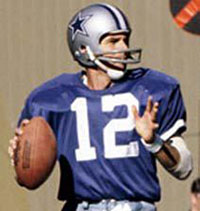
Roger Staubach
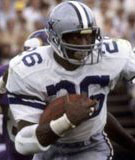
Preston Pearson
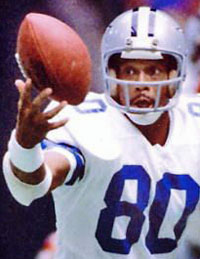
Tony Hill
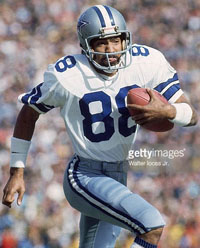
Drew Pearson
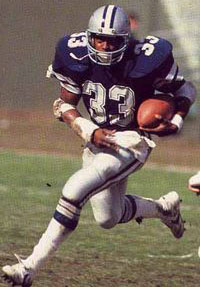
Tony Dorsett
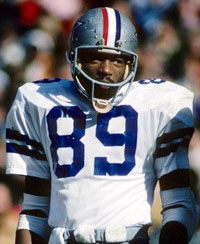
Billy Joe DuPree
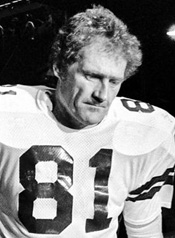
Jackie Smith
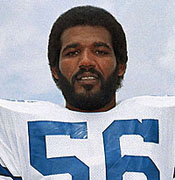
Hollywood Henderson
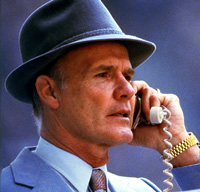
Tom Landry
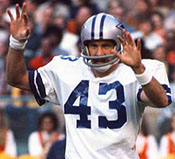
Cliff Harris
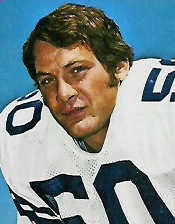
D.D. Lewis
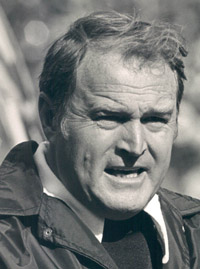
Chuck Noll
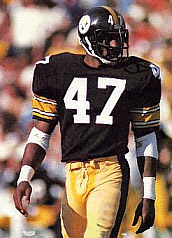
Mel Blount
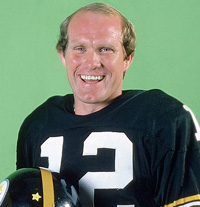
Terry Bradshaw
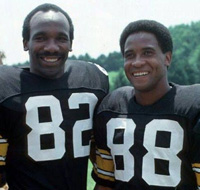
John Stallworth and Lynn Swann
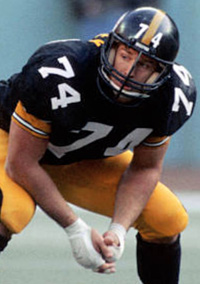
Ray Pinney
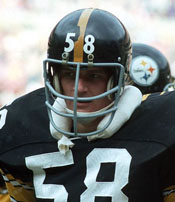
Jack Lambert
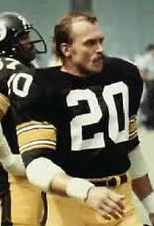
Rocky Bleier
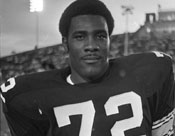
Joe Greene
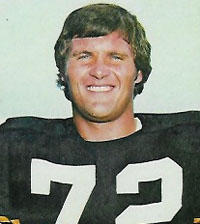
Gerry Mullins
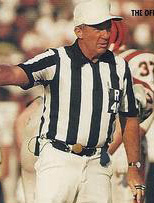
Referee Pat Haggerty
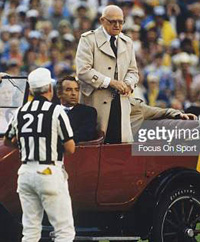
George Halas prepares
to toss the coin.
|
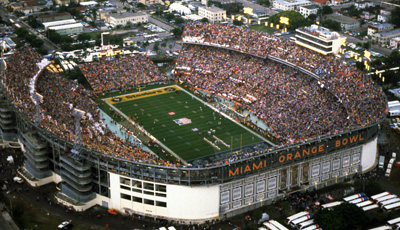 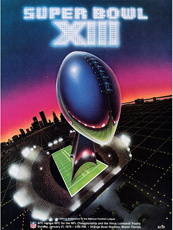
1978 Dallas Cowboys
| # |
Player |
Pos. |
Hgt. |
Wgt. |
College |
Exp. |
| 1 |
Rafael Septien |
K |
5-10 |
175 |
Louisiana-Lafayette |
2 |
| 11 |
Danny White |
QB/P |
6-2 |
195 |
Arizona State |
3 |
| 12 |
Roger Staubach |
QB |
6-3 |
200 |
Navy |
10 |
| 18 |
Glenn Carano |
QB |
6-3 |
200 |
UNLV |
1 |
| 24 |
Alois Blackwell |
RB |
5-10 |
195 |
Houston |
1 |
| 25 |
Aaron Kyle |
CB |
5-11 |
185 |
Wyoming |
3 |
| 26 |
Preston Pearson |
RB |
6-1 |
205 |
Illinois |
12 |
| 31 |
Bennie Barnes |
CB |
6-1 |
190 |
Stanford |
7 |
| 32 |
Dennis Thurman |
CB |
5-11 |
175 |
USC |
1 |
| 33 |
Tony Dorsett |
RB |
5-11 |
190 |
Pittsburgh |
2 |
| 35 |
Scott Laidlaw |
RB |
6-0 |
205 |
Stanford |
4 |
| 36 |
Larry Brinson |
RB |
6-2 |
215 |
Florida |
2 |
| 41 |
Charlie Waters |
S |
6-2 |
200 |
Clemson |
9 |
| 42 |
Randy Hughes |
S |
6-4 |
210 |
Oklahoma |
4 |
| 43 |
Cliff Harris |
S |
6-1 |
190 |
Ouachita Baptist |
9 |
| 44 |
Robert Newhouse |
FB |
5-10 |
215 |
Houston |
7 |
| 46 |
Mark Washington |
CB |
5-10 |
190 |
Morgan State |
9 |
| 50 |
D.D. Lewis |
LB |
6-1 |
215 |
Mississippi State |
11 |
| 53 |
Bob Breunig |
LB |
6-2 |
225 |
Arizona State |
4 |
| 54 |
Randy White |
DT |
6-4 |
250 |
Maryland |
4 |
| 56 |
Thomas Henderson |
LB |
6-2 |
220 |
Langston |
4 |
| 57 |
Bruce Huther |
LB |
6-1 |
220 |
New Hampshire |
2 |
| 58 |
Mike Hegman |
LB |
6-1 |
225 |
Alabama A&M; Tenn. St. |
4 |
| 59 |
Guy Brown |
LB |
6-4 |
225 |
Houston |
3 |
| 60 |
Tom Randall |
G |
6-5 |
245 |
Iowa State |
1 |
| 61 |
Jim Cooper |
G |
6-5 |
260 |
Temple |
2 |
| 62 |
John Fitzgerald |
C |
6-5 |
255 |
Boston College |
8 |
| 63 |
Larry Cole |
DT |
6-5 |
250 |
Air Force; Houston; Haw. |
11 |
| 64 |
Tom Rafferty |
G |
6-3 |
250 |
Penn State |
3 |
| 65 |
Dave Stalls |
DE |
6-5 |
250 |
Northern Colorado |
2 |
| 66 |
Burton Lawless |
T |
6-4 |
255 |
Florida |
4 |
| 67 |
Pat Donovan |
T |
6-5 |
250 |
Stanford |
4 |
| 68 |
Herbert Scott |
G |
6-2 |
255 |
Virginia Union |
4 |
| 70 |
Rayfield Wright |
T |
6-6 |
260 |
Fort Valley State |
12 |
| 71 |
Andy Frederick |
T |
6-6 |
257 |
New Mexico |
2 |
| 72 |
Ed Jones |
DE |
6-9 |
270 |
Tennessee State |
5 |
| 75 |
Jethro Pugh |
DT |
6-6 |
260 |
Elizabeth City State |
14 |
| 76 |
Larry Bethea |
DT |
6-2 |
250 |
Michigan State |
1 |
| 79 |
Harvey Martin |
DE |
6-5 |
250 |
Texas A&M-Commerce |
6 |
| 80 |
Tony Hill |
WR |
6-2 |
200 |
Stanford |
2 |
| 81 |
Jackie Smith |
TE |
6-4 |
235 |
Northwestern State (LA) |
16 |
| 82 |
Robert Steele |
WR |
6-4 |
195 |
North Alabama |
1 |
| 86 |
Butch Johnson |
WR |
6-1 |
185 |
California-Riverside |
3 |
| 88 |
Drew Pearson |
WR |
6-0 |
185 |
Tulsa |
6 |
| 89 |
Billy Joe DuPree |
TE |
6-4 |
230 |
Michigan State |
6 |
|
1978 Pittsburgh Steelers
| # |
Player |
Pos. |
Hgt. |
Wgt. |
College |
Exp. |
| 5 |
Craig Colquitt |
P |
6-1 |
180 |
Tennessee |
1 |
| 10 |
Roy Gerela |
K |
5-10 |
185 |
New Mexico State |
10 |
| 12 |
Terry Bradshaw |
QB |
6-3 |
215 |
Louisiana Tech |
9 |
| 15 |
Mike Kruczek |
QB |
6-1 |
200 |
Boston College |
3 |
| 18 |
Cliff Stoudt |
QB |
6-4 |
215 |
Youngstown State |
1 |
| 20 |
Rocky Bleier |
RB |
5-11 |
210 |
Notre Dame |
9 |
| 21 |
Tony Dungy |
CB |
6-0 |
190 |
Minnesota |
2 |
| 23 |
Mike Wagner |
FS |
6-1 |
210 |
Western Illinois |
8 |
| 25 |
Ray Oldham |
S |
6-0 |
200 |
Middle Tennessee |
6 |
| 29 |
Ron Johnson |
CB |
5-10 |
200 |
Eastern Michigan |
1 |
| 30 |
Larry Anderson |
KR |
5-11 |
185 |
Louisiana Tech |
1 |
| 31 |
Donnie Shell |
SS |
5-11 |
190 |
South Carolina State |
5 |
| 32 |
Franco Harris |
RB |
6-2 |
230 |
Penn State |
7 |
| 35 |
Jack Deloplaine |
RB |
5-10 |
205 |
Salem |
3 |
| 38 |
Sidney Thornton |
RB |
5-11 |
230 |
Northwestern State (LA) |
2 |
| 39 |
Rick Moser |
RB |
6-0 |
210 |
Rhode Island |
1 |
| 47 |
Mel Blount |
CB |
6-3 |
205 |
Southern |
9 |
| 51 |
Loren Toews |
LB |
6-3 |
220 |
California |
6 |
| 52 |
Mike Webster |
C |
6-1 |
255 |
Wisconsin |
5 |
| 53 |
Dennis Winston |
LB |
6-0 |
230 |
Arkansas |
2 |
| 55 |
Jon Kolb |
T |
6-2 |
260 |
Oklahoma State |
10 |
| 56 |
Robin Cole |
LB |
6-2 |
220 |
New Mexico |
2 |
| 57 |
Sam Davis |
G |
6-1 |
255 |
Allen |
12 |
| 58 |
Jack Lambert |
LB |
6-4 |
220 |
Kent State |
5 |
| 59 |
Jack Ham |
LB |
6-1 |
225 |
Penn State |
8 |
| 64 |
Steve Furness |
DT |
6-4 |
255 |
Rhode Island |
7 |
| 65 |
Tom Beasley |
DT |
6-5 |
255 |
Virginia Tech |
1 |
| 66 |
Ted Peterson |
C |
6-5 |
245 |
Eastern Illinois |
2 |
| 67 |
Gary Dunn |
DT |
6-3 |
260 |
Miami (FL) |
3 |
| 68 |
L. C. Greenwood |
DE |
6-6 |
245 |
Arkansas Pine Bluff |
10 |
| 69 |
Fred Anderson |
DE |
6-4 |
240 |
Oregon St./Prairie View |
1 |
| 72 |
Gerry Mullins |
G |
6-3 |
245 |
USC |
8 |
| 74 |
Ray Pinney |
T |
6-4 |
250 |
Washington |
3 |
| 75 |
Joe Greene |
DT |
6-4 |
275 |
North Texas |
10 |
| 76 |
John Banaszak |
DT |
6-3 |
240 |
Eastern Michigan |
4 |
| 77 |
Steve Courson |
T |
6-1 |
275 |
South Carolina |
1 |
| 78 |
Dwight White |
DE |
6-4 |
255 |
Texas A&M Commerce |
8 |
| 79 |
Larry Brown |
T |
6-4 |
245 |
Kansas |
8 |
| 82 |
John Stallworth |
WR |
6-2 |
190 |
Alabama A&M |
5 |
| 83 |
Theo Bell |
WR |
6-0 |
185 |
Arizona |
3 |
| 84 |
Randy Grossman |
TE |
6-1 |
220 |
Temple |
5 |
| 86 |
Jim Smith |
WR |
6-2 |
205 |
Michigan |
2 |
| 87 |
Jim Mandich |
TE |
6-2 |
225 |
Michigan |
9 |
| 88 |
Lynn Swann |
WR |
5-11 |
180 |
USC |
5 |
| 89 |
Bennie Cunningham |
TE |
6-5 |
255 |
Clemson |
3 |
|
References: Journey to Triumph: 110 Dallas Cowboys Tell Their Stories, Carlton Stowers (1982)
The Super Bowl: Celebrating a Quarter-Century of America's Greatest Game (1990)
Super Bowl Chronicles: A Sportswriter Reflects on the First 30 Years of America's Game, Jerry Green (1995)
Super Bowl: The Game of Their Lives, Danny Peary (ed.) (1997)
The Football Game I'll Never Forget: 100 NFL Stars' Stories, selected by Chris McDonell (2004)
Landry's Boys: An Oral History of a Team and an Era, Peter Golenbock (2005)
Game of My Life Dallas Cowboys: Memorable Stories of Cowboys Football, Jean-Jacques Taylor (2006)
The Ultimate Super Bowl Book, Bob McGinn (2009)
Staubach: Portrait of the Brightest Star, Carlton Stowers (2010)
The Dallas Cowboys: The Outrageous History of the Biggest, Loudest, Most Hated, Best Loved Football Team in America,
Joe Nick Patoski (2013)
50 Years, 50 Moments: The Most Unforgettable Plays in Super Bowl History, Jerry Rice and Randy O. Williams (2015)
Super Bowl Gold: 50 Years of the Big Game, Sports Illustrated (2015)
The Super Bowl: The First Fifty Years of America's Greatest Game, David Fischer (2015)
The NFL in the 1970s: Pro Football's Most Important Decade, Joe Zagorski (2016)
The First 50 Super Bowls: How Football's Championships Were Won, Ed Benkin (2018)
|
|























